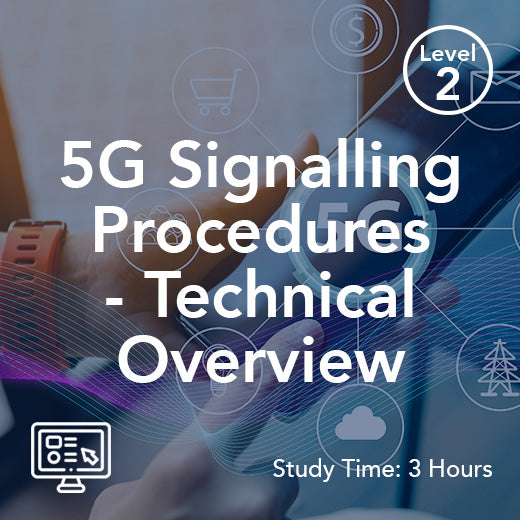OAM (Operations, Administration, Maintenance) garantit le bon fonctionnement des réseaux de télécommunications, en optimisant les performances, la sécurité et la fiabilité.
- , par Stephanie Burrell
- 9 min temps de lecture
Dans le monde des télécommunications, comprendre le jargon technique peut souvent donner l’impression de déchiffrer une langue étrangère. L'un de ces termes fréquemment rencontrés est CINR, ou Carrier to Interference plus Noise Ratio, qui joue un rôle crucial dans la qualité des communications sans fil. En termes simples, CINR est une mesure qui permet de déterminer la clarté et la fiabilité d'une connexion en comparant la force du signal souhaité à l'interférence de fond. Ce concept est vital à la fois pour les ingénieurs travaillant sur les performances du réseau et pour les utilisateurs quotidiens recherchant une meilleure connectivité. Dans ce guide, nous expliquerons ce que signifie CINR, pourquoi c'est important et comment cela affecte votre expérience mobile et Internet, le rendant accessible à tous.
Introduction au CINR
Pour vraiment comprendre, la compréhension du CINR, ou Carrier to Interference plus Noise Ratio, est cruciale dans les télécommunications. Cela nous aide à comprendre avec quelle efficacité un réseau peut fournir des signaux clairs et fiables au milieu du bruit de fond et des interférences. Cette section présente les concepts fondamentaux du CINR.
Qu’est-ce que le CINR ?
Le CINR est une mesure essentielle en télécommunications qui évalue la qualité d'une liaison de communication sans fil. Il compare la puissance du signal souhaité à la somme de la puissance des interférences et du bruit. En termes plus simples , cela montre à quel point le signal se démarque de la perturbation de fond.
Un CINR plus élevé indique un signal plus clair, ce qui fait une différence significative en conduisant à une meilleure connectivité et à moins d'appels interrompus ou d'interruptions de données. Pour les consommateurs, cela signifie un streaming plus fluide et des téléchargements plus rapides.
Les ingénieurs et les gestionnaires de réseau se concentrent sur CINR pour évaluer les performances du réseau et apporter des améliorations. C'est un paramètre qui permet de prendre des décisions éclairées sur les investissements dans les infrastructures et les mises à niveau technologiques.
Importance du CINR dans les télécommunications
L’importance du CINR ne peut être surestimée dans le domaine des télécommunications. Cela a un impact direct sur la qualité et l’efficacité des services de communication sans fil. Un CINR robuste conduit à des taux de transfert de données améliorés , garantissant aux utilisateurs une connectivité transparente.
Pour les consommateurs , un CINR plus élevé signifie une mise en mémoire tampon réduite et une qualité d'appel supérieure.
Pour les fournisseurs de services , cela représente un avantage concurrentiel en fournissant des services de qualité supérieure.
CINR est également crucial pour la planification du réseau. Il aide les ingénieurs à identifier les domaines nécessitant des améliorations, garantissant ainsi une allocation optimale des ressources. Grâce à une analyse détaillée, en analysant le CINR, les réseaux peuvent être optimisés pour une meilleure prestation de services.
Bases de la mesure CINR
La mesure CINR consiste à évaluer le rapport entre la puissance du signal porteur et la puissance combinée des interférences et du bruit. Le processus implique généralement :
Identification du signal porteur – le signal principal destiné à la transmission.
Mesurer la puissance des interférences – signaux indésirables qui perturbent la communication.
Mesurer la puissance du bruit – signaux aléatoires provenant de diverses sources qui peuvent affecter la clarté.
La mesure aide à déterminer la capacité du réseau à maintenir un signal clair, révélant un modèle de performance spécifique. Une mesure plus élevée indique de meilleures performances, guidant les améliorations du réseau.
Comment fonctionne le CINR
Cette section approfondit les mécanismes du CINR en offrant un aperçu du fonctionnement de cette mesure au sein des réseaux de télécommunications. Nous explorons les facteurs influençant le CINR et les méthodes pour l’améliorer.
Rapport signal/interférence expliqué
Le rapport signal/interférence (SIR) est un élément essentiel du CINR. SIR mesure la force du signal souhaité contre les interférences. Un SIR plus élevé indique un signal plus fort et plus clair.
Comprendre le SIR est vital car il a un impact direct sur la qualité de la communication.
La gestion efficace du SIR conduit à une meilleure fiabilité du réseau.
Le SIR donne un aperçu des performances du réseau. En maintenant un SIR élevé, les réseaux garantissent une meilleure connectivité, se traduisant par une satisfaction accrue des utilisateurs.
Facteurs affectant le CINR
Plusieurs éléments peuvent être identifiés qui ont un impact sur le CINR, chacun contribuant à la qualité globale du signal. Ceux-ci incluent :
Facteurs environnementaux : le terrain, les conditions météorologiques et les obstacles peuvent dégrader le signal.
Conception du réseau : La disposition et la capacité de l'infrastructure réseau.
Sources d'interférences : D'autres appareils électroniques peuvent introduire des interférences.
La reconnaissance de ces facteurs est cruciale pour l’optimisation du réseau. En résolvant ces problèmes, les fournisseurs de services peuvent améliorer le CINR, conduisant ainsi à une meilleure expérience utilisateur.
Améliorer le CINR dans les réseaux
L'amélioration du CINR vise à créer des interventions stratégiques qui améliorent la clarté du signal. Les étapes clés comprennent :
Optimiser la conception du réseau : garantir une disposition et une capacité efficaces.
Réduire les interférences : Minimiser la présence de signaux concurrents.
Technologie de mise à niveau : tirer parti des technologies avancées pour de meilleures performances.
En se concentrant sur ces stratégies, les réseaux peuvent atteindre des valeurs CINR plus élevées. Cela se traduit par une qualité de service améliorée et une satisfaction client.
CINR par rapport à d'autres mesures
Cette section examine le CINR par rapport à d'autres mesures de télécommunications, offrant une compréhension plus claire de son rôle unique. Nous explorons comment le CINR interagit avec la force du signal, le SNR et le BER.
CINR et force du signal
Le CINR et la force du signal sont des concepts interdépendants mais distincts. La force du signal mesure le niveau de puissance d'un signal reçu, tandis que le CINR prend en compte les interférences et le bruit.
Métrique | Définition | Importance |
|---|---|---|
CINR | Rapport signal porteur/interférence + bruit | Indique la qualité globale du signal |
Force du signal | Niveau de puissance du signal reçu | Mesure de base de la présence du signal |
Comprendre les deux aide à évaluer les performances globales du réseau. Même si une puissance de signal élevée est idéale, un CINR élevé garantit clarté et fiabilité.
Comparaison du CINR et du SNR
Le rapport signal/bruit (SNR) est une autre mesure importante. Il mesure la puissance du signal par rapport à la puissance du bruit, à l'exclusion des interférences.
Métrique | Se concentrer | Exclut |
|---|---|---|
CINR | Interférence + Bruit | Aucun |
RSB | Bruit uniquement | Ingérence |
CINR fournit une vue complète en incluant à la fois le bruit et les interférences, offrant ainsi une évaluation plus globale des conditions du réseau. Cela le rend particulièrement utile pour identifier les domaines à améliorer.
CINR par rapport au BER
Le taux d'erreur sur les bits (BER) est le nombre d'erreurs par unité de données transmises. Il est influencé par le CINR, car un CINR faible peut conduire à un BER plus élevé.
Un CINR élevé entraîne moins d’erreurs de transmission.
Un CINR faible augmente la probabilité de corruption des données.
Comprendre la relation entre CINR et BER aide à diagnostiquer et à résoudre les problèmes de communication, garantissant ainsi des services de données plus fiables.
Applications réelles du CINR
CINR joue un rôle important dans les applications de télécommunications du monde réel. Cette section explore son utilisation dans les réseaux mobiles, les services haut débit et les technologies futures.
CINR dans les réseaux mobiles
Dans les réseaux mobiles, le CINR est crucial pour garantir des services voix et données de haute qualité. Cela affecte tout, de la clarté des appels aux vitesses de téléchargement des données.
CINR élevé : entraîne moins d’appels interrompus et une connexion Internet plus rapide.
CINR faible : entraîne une mauvaise qualité des appels et des débits de données lents.
Les opérateurs mobiles surveillent en permanence le CINR pour optimiser les performances du réseau, garantissant ainsi aux clients le meilleur service possible.
CINR dans les services à large bande
Les services haut débit s'appuient sur CINR pour fournir des connexions Internet cohérentes et fiables. Cela affecte à la fois les technologies à large bande fibre et sans fil.
CINR élevé : Garantit des vitesses Internet stables et rapides.
CINR faible : entraîne des déconnexions et des décalages fréquents.
Pour les consommateurs, comprendre le CINR peut expliquer pourquoi leur expérience Internet varie, soulignant l’importance de choisir des fournisseurs dotés d’une gestion de réseau robuste.
CINR et technologies futures
Les technologies émergentes comme la 5G et l’IoT s’appuient fortement sur CINR pour un fonctionnement transparent. Ces technologies exigent des débits de données élevés et une faible latence.
5G : Nécessite un CINR optimal pour une connectivité supérieure.
IoT : dépend de signaux clairs pour une communication fiable entre les appareils.
Garantir un CINR élevé sera essentiel à mesure que ces technologies se généralisent, affectant tout, des villes intelligentes aux véhicules autonomes.
Défis et solutions
La gestion du CINR présente des défis qui doivent être soutenus par des solutions innovantes. Cette section traite des problèmes courants de CINR, du dépassement des contraintes techniques et des innovations récentes.
Problèmes courants de CINR
Plusieurs problèmes affectent généralement le CINR, notamment :
Les interférences provenant d'autres réseaux sans fil entraînent une dégradation du signal.
Barrières environnementales – telles que des bâtiments ou des arbres qui obstruent les signaux.
Limitations de l'équipement – une infrastructure plus ancienne peut ne pas prendre en charge un CINR optimal.
L'identification de ces problèmes est la première étape pour les résoudre, garantissant de meilleures performances et la satisfaction des utilisateurs.
Surmonter les contraintes techniques
Surmonter les contraintes techniques nécessite des stratégies ciblées, notamment :
Mise à niveau de l'infrastructure : mise en œuvre d'équipements modernes dotés de meilleures capacités.
Optimisation de l’utilisation des fréquences : Gérer efficacement le spectre disponible.
Adopter des technologies avancées : Utilisation du Beamforming et du MIMO (Multiple Input Multiple Output).
Ces stratégies contribuent à améliorer le CINR, conduisant à une fiabilité et des performances améliorées du réseau.
Innovations dans la gestion du CINR
Les innovations récentes dans la gestion du CINR se concentrent sur l’exploitation des technologies de pointe. Les points forts incluent :
Analyses basées sur l'IA : identifier et résoudre les problèmes CINR en temps réel.
Techniques de modulation avancées : amélioration de la clarté du signal et réduction des erreurs.
Antennes intelligentes : s'adaptent dynamiquement pour optimiser le CINR.
Ces innovations ouvrent la voie à des performances réseau améliorées, garantissant aux utilisateurs une connectivité supérieure, aujourd'hui et à l'avenir.
UN

































